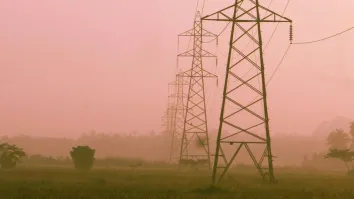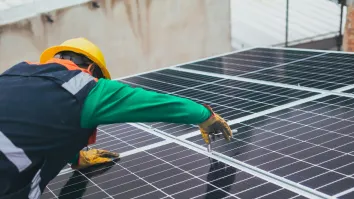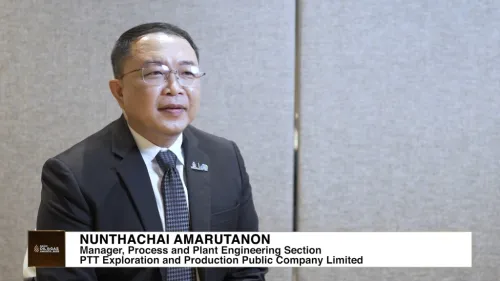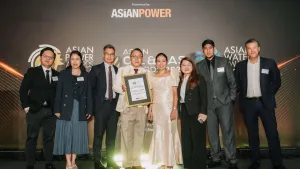Back to the Future: How is Asia's energy sector 3 years after the Tohoku earthquake?
By Akira TokuhiroThe global nuclear ‘enterprise’ is now three years (March 11, 2011) past the historic Tohoku earthquake (M9.0), subsequent tsunami (~14-15m waves), and unfortunately, the continuing consequences of the ‘Fukushima nuclear power plant (NPP) accident. We now live in the post-Fukushima nuclear era.
First let us pay our respects to the tragic loss-of-life (~16,000 fatalities), and the plight of victims who cannot return to their homes. Lest not forget the 2004 southern Indian Ocean tragedy that claimed 230,000+ lives.
The movie, “The Impossible”, was a reminder that energy provides sustenance and socio-economic development for humankind. Energy is crucial in Asia-Pacific (AP) in years to come.
Over the past 15-years, AP has clearly had increasing means to lead global economic growth, relative to stagnating economies of scale in Europe and U.S. AP also has both existing and emerging larger-scale industrial concerns (and capital) to construct new NPPs. Korea is constructing 4 units in UAE, while China has some 25-28 units under construction.
The near-term goal is to establish 40GW of generating capacity by 2020 and to reach some 70-75GW approximately 10 years later. This is very ambitious in light of the limited operating limiting experience (see below).
Some 50 years ago, Japan relied heavily on coal, hydroelectricity and oil, but with ‘technology transfer’ assistance from America’s GE and Westinghouse committed to constructing nuclear power plants (NPPs). As an emerging economy in AP, Tokyo hosted the 1964 Olympics.
Less than 10 years late, it operated its first 1GW LWR. Prior to March 2011 (‘3.11’), Japan had some 40+GW in nuclear-generated electricity, corresponding to 54 units; this provided some 30% of the electricity demand. With increasing reliance on nuclear power, Japan emerged as a global economic leader in the 1980s. Since ‘3.11’ however, with practically all NPPs have been shutdown.
This increased import of LNG, such that in 2012 the balance sheet showed a ¥6.9Trillion ($75 Billion) deficit. At the same time, Japan ‘walked away’ from its own commitment to the Kyoto Protocol.
With an effort to yet again revitalize the country under (Prime Minister’s) ‘Abe-nomics’ Japan is spending its way toward the 2020 Tokyo Olympics and charting a post-Fukushima national economy. Re-formulation of the national energy portfolio remains unclear since there is still fervent opposition to restarting its idle reactors.
Both the Japanese and its elected officials will have to agree on an energy portfolio (including nuclear energy) to maintain its global status. In order to address the economic ambitions and poor environmental situation that directly impact the health of its population, AP’s emerging nations will have to rely on nuclear relative to fossil fuels.
Each country in AP will make its own choice.
Although a NPP itself a global, engineered product, the act of construction, operation, maintenance, international compliance (safeguards) and safety directly involve people. These factors are thus intimately tied to the prevailing national culture, especially safety culture and the level of ‘transparency’ exercised.
As in the emergency response under crisis at Fukushima, human factors remain the largest relative uncertainty in nuclear power. It is evident that with rapid growth in China, there a number of dominant issues as follows:
1) shortfalls in the supply chain including large forgings, components (piping), and fuel,
2) training and qualification of a nuclear workforce and
3) implementation of global standards, thus international compliance in terms of a ‘validated and verified’ (V&V) regulatory body implementing ‘best practices’ such as transparency, tested emergency preparedness and timely self-initiation of lessons learned (from ‘mistakes’). As the pan-Asian culture can be characterized (by some) as ‘insular’, group-oriented and contrastingly accommodating and practicing harsh compliance, it seems evident that some institutional paradigm shifts will be needed to meet global expectations (USNRC, IAEA, WANO etc.).
So, what are the lessons learned and what can we expect? If anything, Fukushima has taught us to expect the unexpected – the impossible.
Let us face up to facts and consider the probabilities of both the anticipated and un-anticipated. The 6 units at Fukushima (and other Japanese sites) all survived the quake and tsunami but were damaged.
The reactors shutdown and emergency cooling systems functioned as designed. However, with loss of on-site and off-site electrical power, providing automatic and/or planned (human) response to the reactor became quickly overwhelming.
Further this author notes that core damage can start as early as 2 hours after loss of decay heat cooling. In the aftermath we now have three partially-to-fully melted cores. The recovery, remediation and restoration (R3) will likely require at least 40 years, 10,000+ personnel, and perhaps more than US$100B.
It will require management of large volumes of waste. In 2050 when the R3 are nearing conclusion what will Japan, AP and the world will likely look?
Next, let us consider what the post-Fukushima world might look like, especially with rapid growth in China, India and along the Pacific Rim. The fact is that there is emerging construction experience but little experience in terms of maintenance, operations and ‘best practices’ (in safety-grade component certification, regulatory, workforce competency, safety and all-encompassing transparency).
If one looks at the history of hazard-inherent technologies (accidents involving automobiles, airplanes, petrochemical plants, mining etc.) in developed nations, one might conclude it takes at least 50, if not 75 years to develop socio-politico-economic best practices such that the integrated outcome is a perception of safety, and thus partial-to-majority public acceptance. Given this and a sensible conservatism practiced in nuclear reactor safety, one might expect the next nuclear power ‘incident’ to again occur in Asia Pacific.
This is bad news. So, we need to ask how can this be prevented?
Perhaps the only way is to work toward increasing transparency and global partnerships. That is, to rely on importing, adopting and implementing best, global practices from establish nuclear power nations.
While transparency, defense-in-depth and ‘the impossible’ are particularly significant in nuclear energy, best safety practices and expectations (standards) exist in the automotive and airplane sectors. It is thus self-evident to this author that best practices themselves should be incorporated in the post-Fukushima era in AP.
I strongly encourage this in the near-term that is already here. Be prepared.




















 Advertise
Advertise








